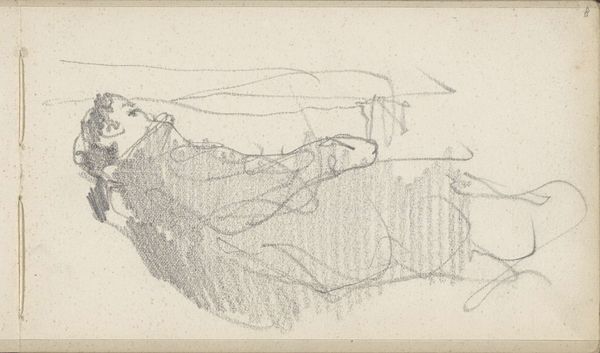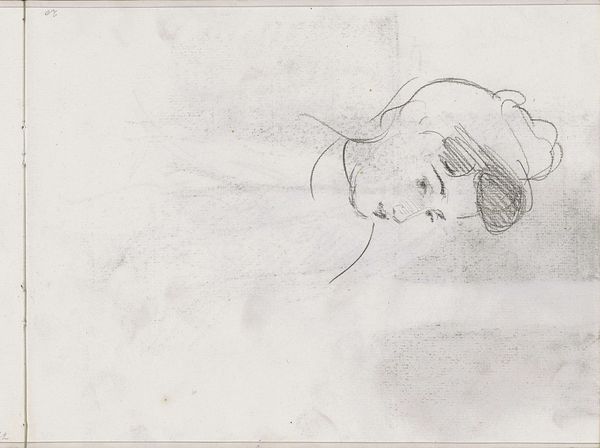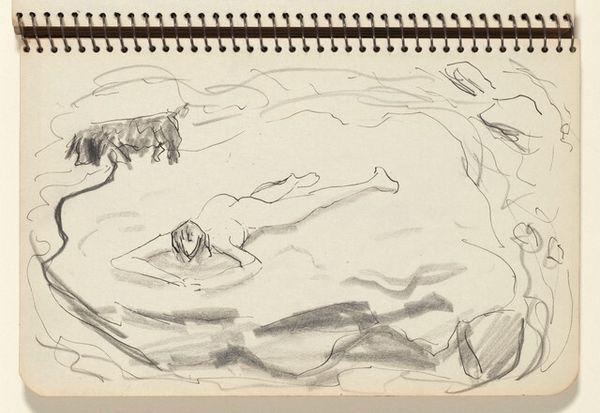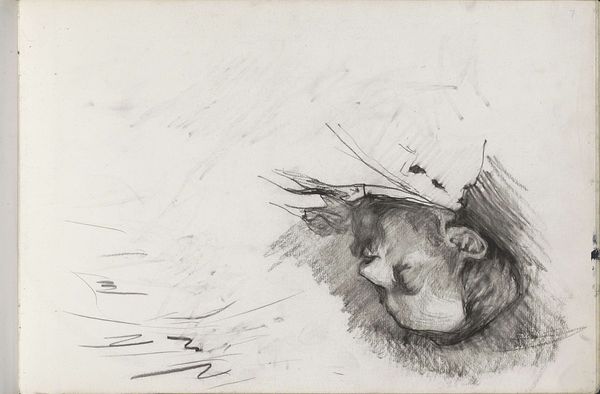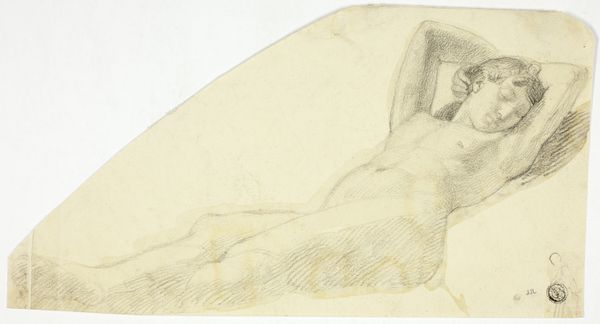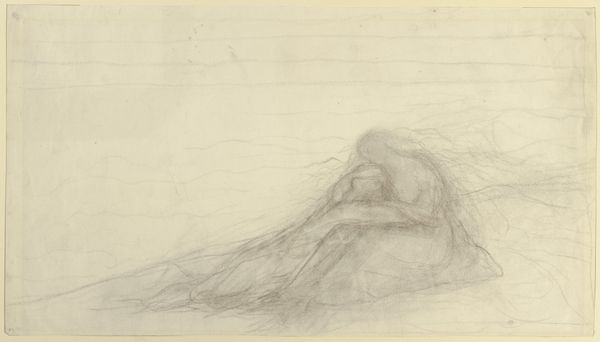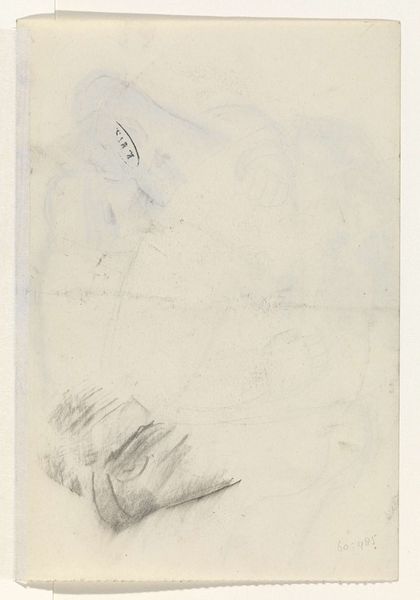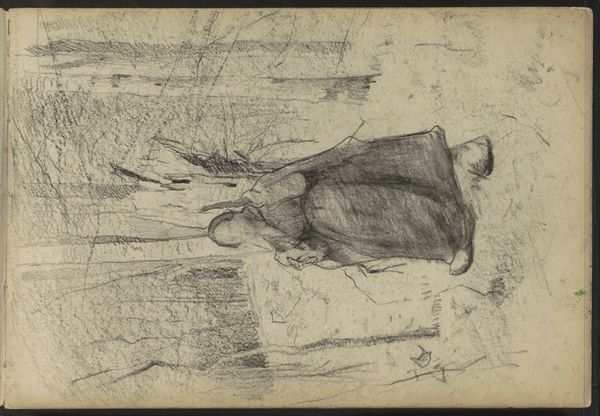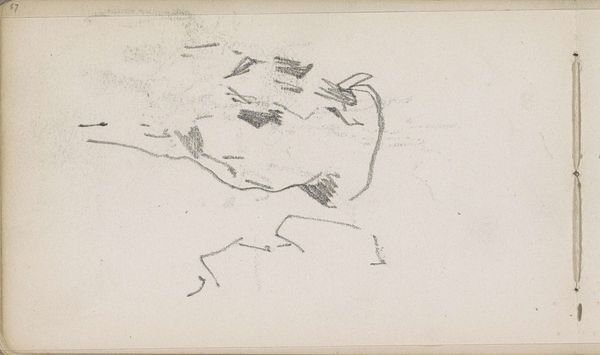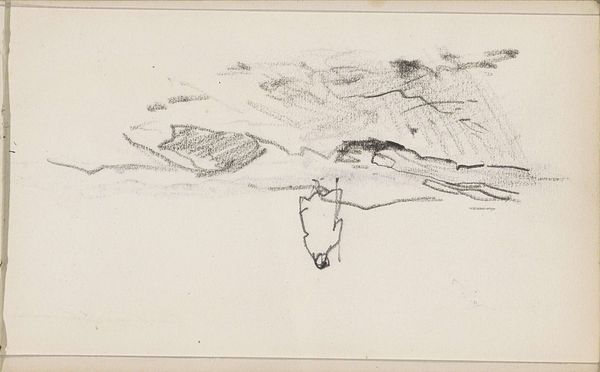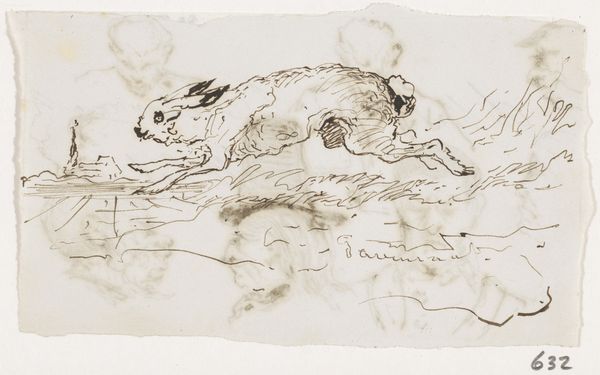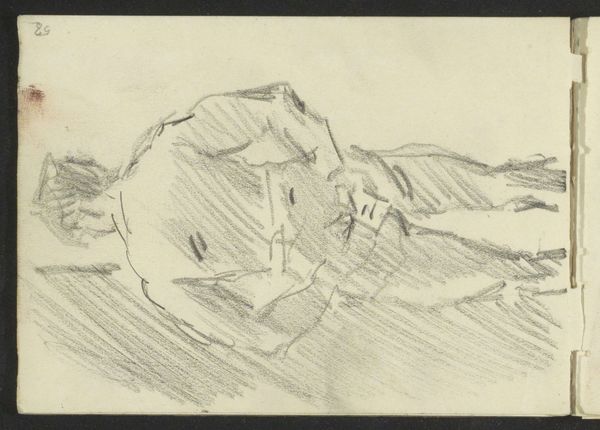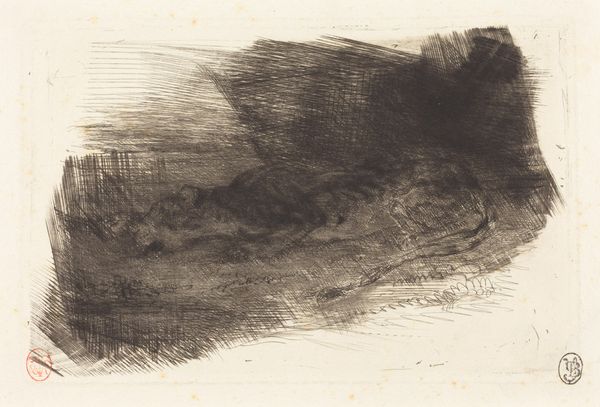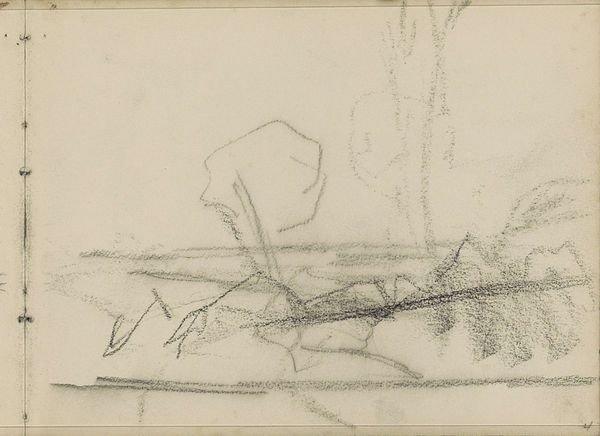
drawing, pencil
#
portrait
#
drawing
#
pencil sketch
#
figuration
#
pencil
#
realism
Dimensions: height 98 mm, width 165 mm
Copyright: Rijks Museum: Open Domain
Editor: Here we have Theo Nieuwenhuis' "Person in Bed," created sometime between 1876 and 1951. It's a pencil drawing. It strikes me as such a vulnerable depiction. What do you see in this piece? Curator: I see an exploration of the intersection between the personal and the political, particularly concerning representations of rest and vulnerability. This drawing compels us to consider, whose rest is valued, and whose is deemed a luxury? Editor: That's a really interesting angle. I hadn't considered that. Can you elaborate? Curator: Absolutely. Consider the historical context, Nieuwenhuis' work falls within a period marked by significant social stratification and labor exploitation. Visual depictions of rest, or conversely, labor, often served ideological purposes. Does this sketch reinforce or challenge the social order of the time? Does it romanticize the rest of a privileged person or reveal the exhaustion of someone marginalized? The grid background feels like it could reference being trapped. Editor: The grid, right, like they're trapped behind it. So you’re suggesting that even a seemingly simple drawing of someone resting can be loaded with socio-political meaning? Curator: Precisely. We must ask ourselves: who has the privilege to be represented this way, and what does it say about our own biases and assumptions? Editor: It's fascinating to think about how something so intimate can reflect broader societal issues. Curator: Indeed. Art serves as a powerful tool for understanding ourselves and the world around us, and it allows us to dissect those perspectives that permeate how we view each other and the power structures within our societies.
Comments
No comments
Be the first to comment and join the conversation on the ultimate creative platform.
